
‘Tis the holiday season, and whether you celebrate Chanukkah, Yalda, Saturnalia, Dongzhi, Modraniht, Malkh, Solis Invicti, Christmas, or are a Festivus-celebrating mutant, looks like good food, family, and free time are foretold in your near future.
For those of you yearning to get away from it all, disconnect from mobile phones and the internet (gasp!), and snuggle under a warm blanket with some cider, a ghalyoon, and a good book, here are a few suggestions. Neither serious nor trash, they have just the right amount of fluff to send you through time and space on your own private vacation!
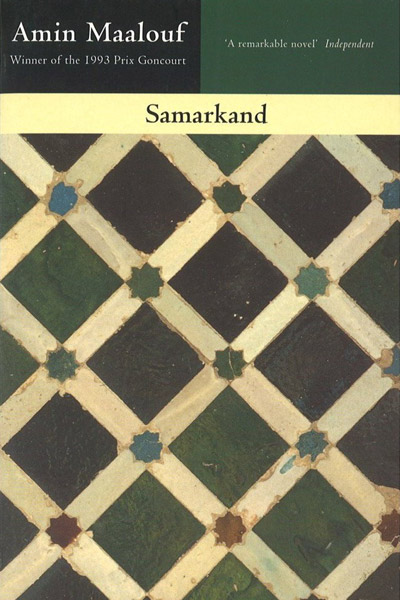
Samarkand, Amin Maalouf: A historical fiction novel written in 1988, Samarkand won the Prix Maison de la Presse and is set in 11th century Persia soon after the assassination of the Seljuq king Alp Arslan and into the reign of Malik Shah I. The main characters of this rich tale that infuses mysticism, philosophy, and historical what-ifs include the great Omar Khayyam, Abu Ali al-Hasan al-Tusi (better known as Nizam al-Mulk), and Hassan al-Sabbah of the Nizari Ismailis, or more excitingly, the Ḥashshashin. Samarkand was originally written in French by the Lebanese-French author. Also recommended by this author: Bathasar’s Odyssey, The Rock of Tanios
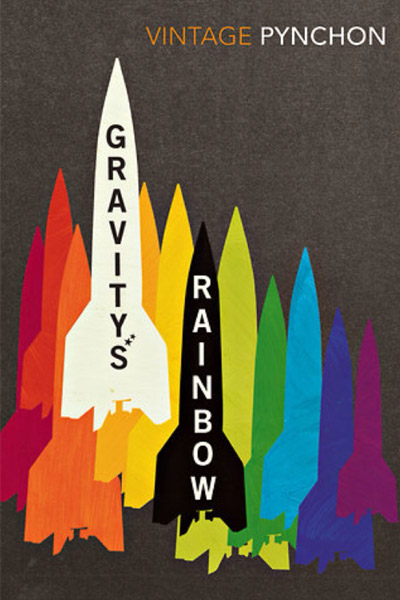
Gravity’s Rainbow, Thomas Pynchon: Written in 1973, the story is set in England towards the end of World War II. Admittedly a confusing plot, the story feels very much like a term paper written for a creative writing class taught by Werner von Braun by a psychology student who is a cross between Dante Alighieri and Dave Chappelle. To give you a sample of the mind-blowing jumble of high culture, low class, and technical, the protagonist, Tyrone Slothrop, gets an erection every time there is a V2 rocket attack! Gravity’s Rainbow contains a bizarre diversity of themes via its characters’ interactions – rocketry, Nazi occult practices, psychology, and metaphysics; its minute historical details, such as a photograph of von Braun with his arm in a cast or a rare radio broadcast, are stunningly accurate.
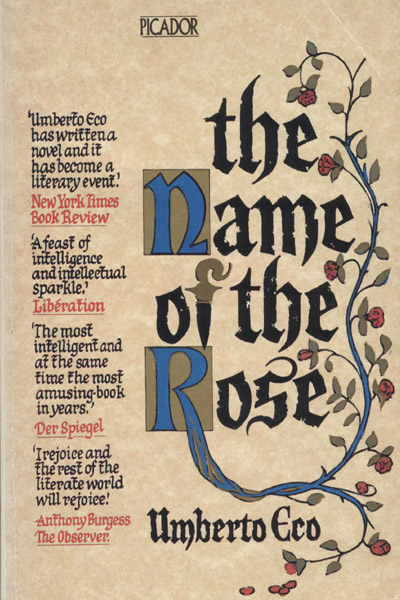
The Name of the Rose, Umberto Eco: Originally written in Italian (Il nome della rosa) in 1980, translated into English three years later, and made into a movie starring Sean Connery and a young Christian Slater three years after that, The Name of the Rose is a spectacular murder mystery set in a Benedictine monastery in northern Italy 1327. The key to the murder lies in Aristotle’s book on comedy – as William of Baskerville, the protagonist, discovers, everyone who has read it has died. William brings up questions of forbidden knowledge, inquiry versus theological dogma, memory, meaning, and reality by discussing the murder through a lens of various medieval manuscripts with his understudy, Adso. In a sense, Il nome della rosa can also been seen as a bildungsroman. For the more accomplished reader, the book carries allusions to various philosophies, authors, and even fictional characters and fits them in a manner that deeply enriches the story. Also recommended by this author: Foucault’s Pendulum
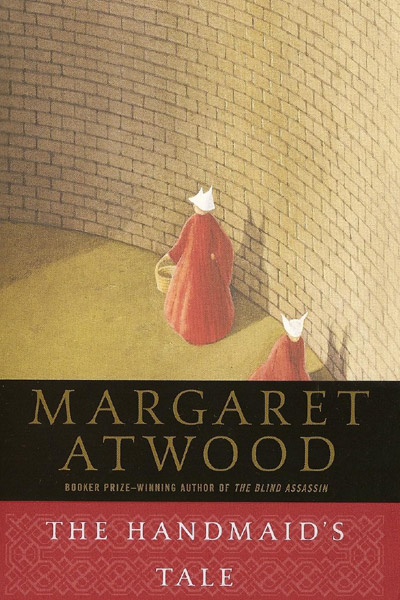
A Handmaid’s Tale, Margaret Atwood: This award-winning novel from 1985 is a work of dystopian speculative fiction based in a futuristic Christian theocratic totalitarian state. In the fictional Republic of Gilead, women’s freedom is severely restricted – they are not allowed to read, go out of the house, or have any privacy – and a class of them are kept as concubines for purely reproductive purposes in an era of increasing sterility due to sexually transmitted diseases and pollution. The protagonist, Offred, is a high-ranking official’s concubine – a Handmaid – and the tale is related from her perspective. The Handmaid’s Tale is a commentary on race, gender, and religion in a highly stratified and rigid society that designates different classes of people for various functions. Even sex is purely for reproductive purposes and not for pleasure. Even in this repressive climate, biology throws a spanner in the works and the Commander has an affair with Offred. The author has always tried to explain that her book is not science fiction but speculative fiction, meaning that it could indeed happen now. Readers must keep in mind the rise of Billy Graham and evangelicalism in the United States in this era.
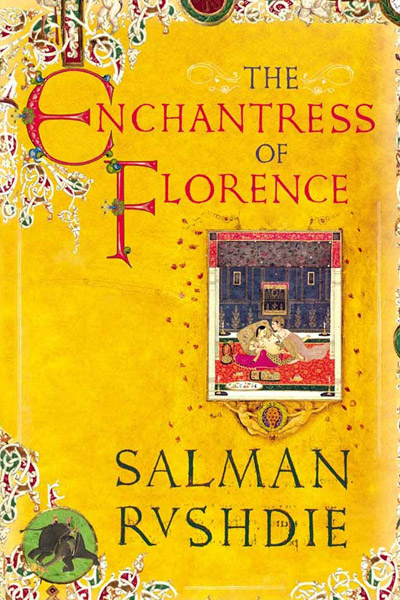
The Enchantress of Florence, Salman Rushdie: This novel is one of the most sumptuously rich mixtures of history and fable in a multicultural setting ever written. The main characters in this story are none other than history’s famous rulers and politicians, the Mughal Emperor Akbar in India and the Italian diplomat and political thinker Niccolò Machiavelli, in a time when Florence as well as the Mughal Empire were in their ascendancy. Some characters are imagined by other characters in the book – Qara Köz, for example, is Akbar’s fantasy of the perfect lover – yet accepted by all as if real. Rushdie brings magic, religion, desire, and sheer imagination together in a novel that is nonetheless deeply historical and profound in its symbolism and characters if only the reader allows his/her mind to explore the fantasy world of the enchantress rather than dissect, analyse, and categorise it. Also recommended by this author: The Moor’s Last Sigh
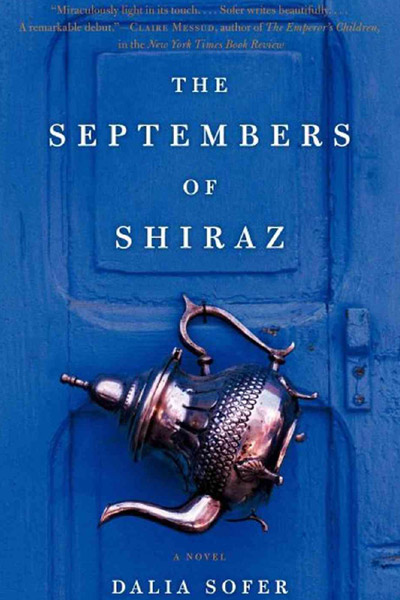
Septembers of Shiraz, Dalia Sofer: Set in the immediate aftermath of the Iranian Revolution of 1979, this is a tale of on well-to-do Jewish family whose world is turned upside down by the fateful events. The new Islamic government, suspicious of the Jewish heritage of the family and their slender ties to the Shah, arrest the father, Isaac Amin, and try to torture him into confessing that he is a Zionist spy. In the puritanical new theocracy, Isaac’s brother’s alcohol smuggling racket creates another pressure point as does the pre-arrest estrangement between Isaac and his wife, Farnaz. While the focus is on the adults, the nine-year-old daughter, Shirin, steals files that contain state secrets from her playmate’s house who happens to be the daughter of the man in charge of the prison Shirin’s father is in. There is a Brooklyn connection too – the non-religious son of the family struggles without money his family sends. The author was herself a refugee of Iran’s turmoil in her youth and this experience has clearly informed her writing. She weaves together questions about faith, love, and memory in the setting of political and religious oppression, and comes to a startling, perhaps naïve yet difficult to refute truth – meaning and significance in life derive not from ideas or ideologies but from shared memory and the ties that bind.
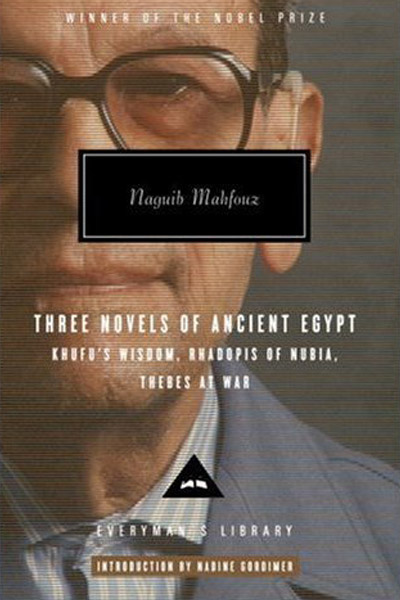
Three Novels of Ancient Egypt, Naguib Mahfouz: These three novellas, Khufu’s Wisdom, Rhadopis of Nubia, and Thebes at War are among Mahfouz’s earliest works and less known than his more famous Cairo Trilogy, Midaq Alley, or The Day the Leader Was Killed. Nonetheless, the three paint a scene of life in Ancient Egypt and are in many ways Greek tragedies in an Ancient Egyptian setting - the hero coming undone for just one tragic flaw. The first story is set during the construction of the Great Pyramid and about the pharaoh’s attempts to thwart his throne passing to someone not of his lineage; the second tells the tale of a kingdom neglected by a pharaoh in love with a courtesan; and the third is about an exiled son of Thebes reclaiming his kingdom from the Hyksos who had defeated the Egyptians and chased them out of their country. All three deal with fate, mortality, and morality, and have a strong cast of female characters. Perhaps not as sophisticated as the Nobel laureate’s later works, these three stories are quite enjoyable and reminiscent of Mika Waltari’s The Egyptian.
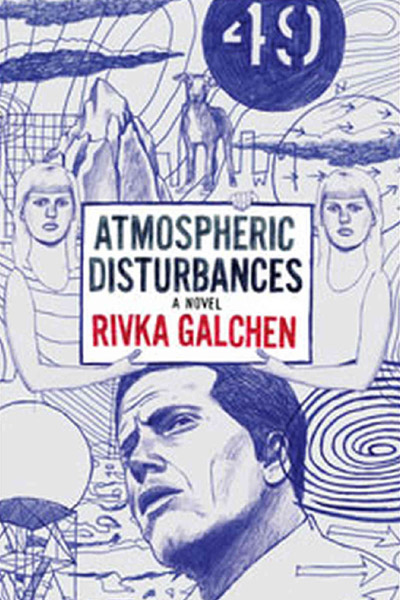
Atmospheric Disturbances, Rivka Galchen: A very clever story about a middle-aged psychiatrist, Leo Liebenstein, who wakes up one day believing that his Argentine wife has been replaced by a doppelgänger, this book also spreads awareness of a rare neurological disease known as Capgrass Syndrome. Rather than take a distant narrator’s perch, Galchen dives into the story and follows Liebenstein’s thinking and efforts to track down his real wife. The result is an insightful, sensitive, and witty book that frays identity, reality, and even geography. The wife’s anguish at her husband’s condition is also shown but as far as Leo is concerned, Rema – the wife – remains a rather cool simulacrum. Liebenstein sees his wife as an impostor, all the while completely unaware that it is he who is not himself. At times touching, the novel is also a philosophical inquiry into the mind, Being, and the false authority of science.
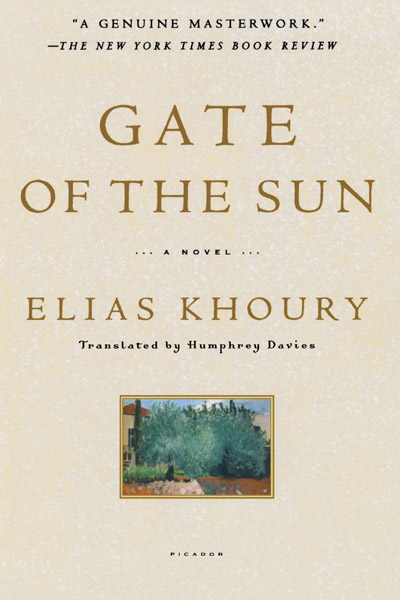
Gate of the Sun, Elias Khoury: If the Palestinians ever wanted their own Exodus (Leon Uris) story, this book, albeit more sophisticated, is certainly one of the contenders. Set in the backdrop of the Shatila and Sabra massacres during the Lebanese civil war in 1982, Khoury unravels a powerful story via a one-sided conversation between Younis, a comatose Palestinian fighter of the previous generation, and Dr. Khaleel, a nurse in actuality who had a little training in China. The narrative depicts the sufferings of the average Palestinian in the camps trying to survive. Yet the message in this tale is to try and understand the Israeli Other. As Khoury said in an interview, the Other is usually the mirror image of the “I”. Incidents such as a checkpoint crossing or the meeting between a Palestinian and an Israeli who now lives in the former’s home record the indignities of daily life but also scoffs at the Arabs who claim to stand with Palestinians yet allow the dire state of the camps. One character tells another that Palestinians must also understand the pain of the Holocaust: “In the faces of those people being driven to slaughter, didn’t you see something resembling your own?” Gate of the Sun also looks at memory, overlaying the Lebanese experience with the Nakbah – as one character admits, we remember things we never experienced because we assume the memories of others. A powerful and nuanced snapshot of the tragedy in the Middle East.
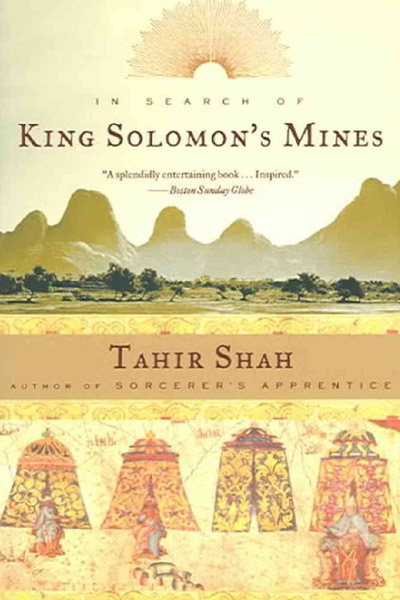
In Search of King Solomon’s Mines, Tahir Shah: A light and fun read, this novel follows the author’s quest for the fabulous and unparalleled riches of the wisest king of the Bible. Sparked by coming across a bogus map in Jerusalem, Shah follows the clues in the Septuagint, the Copper Scroll (one of the Dead Sea Scrolls), the Kebra Nagast, as well as local folk-tales to chase down this ancient legend. The author, the reader realises, is not actually looking for the treasure but chasing down a story, from the Temple to the rock-cut churches of Lalibela and a cursed mountain. Pulling together geology, myth, and history, Shah creates his own Biblical mystery tale in the form of an Ethiopian travelogue. As such, narratives and characters remain shallow if colourful and one might not be drawn to the protagonist in any way. Yet that serves to direct attention to the story... not of King Solomon or Sheba, but to the story of the story, how it is remembered and a part of local life in various ways. Also recommended by this author: The Caliph’s House: A Year in Casablanca
Other suggestions: Tariq Ali: A Sultan in Palermo, The Book of Saladin; VS Naipaul: A Bend in the River
So I wish you cheer, I wish you good reading, and I wish you peace to enjoy the two. Enjoy the holidays!
Jaideep spends most of his time avoiding work; when not married to his books, he likes to cook, sail, and scuba. A great admirer of Hatshepsut, Jaideep refuses to live in the 21st century. He grew up in the Middle East and Europe. When forced into wage slavery, he is a doctoral student in History at Vanderbilt University. He tweets at @orsoraggiante.